
Understand Your Body's Systems and Get the Results You Want - Right Now
Whether you’re training for a marathon or a weight lifting competition, you want to get the most out of each workout session.
It’s all being more efficient with your precious time!
Learning what the 3 energy pathways are, and the role each of these pathways play when exercising can help you identify the best ways to plan for efficient and effective exercise.
And that can go a long way to improve your performance and get the results you’re looking for in the shortest amount of time!
Keep reading to learn how you can work smarter, not harder, to accomplish your goals as quickly as possible.
What is ATP?
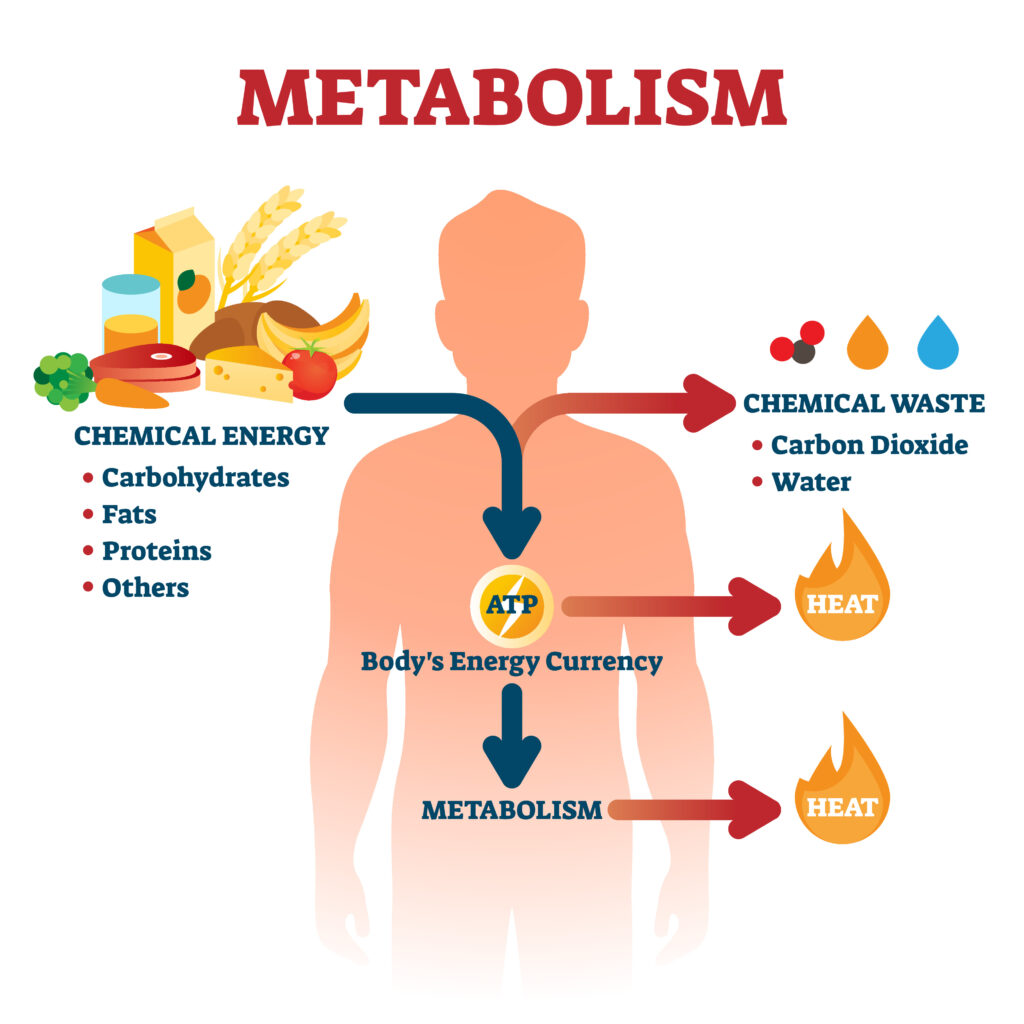
ATP stands for adenosine triphosphate.
It is a molecule that carries energy in humans and other living things.
Basically, it takes the chemical energy from broken-down macronutrients, such as protein, fats, and carbohydrates, and releases it to provide your body with energy.
So, think of ATP as the usable form of energy for our bodies.
Without this form of energy, our cells would not have the power they need to work.
What are the 3 Energy Pathways?

Our bodies utilize three different energy pathways – or metabolic systems – to move stored energy and form ATP.
We, unfortunately, cannot store very much of this form of energy, though.
So our body needs to continuously make (resynthesize) ATP, using one of our three energy pathways.
The body’s 3 energy pathways are the phosphagen system, the anaerobic pathway, and the aerobic pathway.
As you learn more about each of these pathways below, it can help you understand which pathway your body uses during different types of workouts.
This information can help you plan for efficient and effective exercise to help you reach your goal and help you create a rest and recovery post-workout plan.
Phosphagen System

This system is an anaerobic system, meaning it does not need oxygen to work.
It is also a non-metabolic pathway, so it is not linked to the chemical reactions within a cell.
This energy pathway uses ATP-CP – stored adenosine triphosphate and creatine phosphate, also known as phosphocreatine.
Since our bodies can only store minimal energy, this pathway is only activated when we perform short, but intense exercises.
These short, intense exercises, such as throwing a discus or running the 100-meter dash, require a sudden burst of energy, and they get it through the phosphagen system.
This system can quickly produce and deliver energy to our bodies.
But, it is only able to do so for very short and intense exercises.
Since the creatine phosphate metabolized by this system gets depleted very quickly, your body wouldn’t rely on this system for something like endurance training.
Instead, it would need to turn to one of the other energy pathways to receive the fuel it needs to keep going.
Aerobic Pathway

The aerobic pathway can use macronutrients (proteins, carbohydrates, and fats) to produce ATP.
While this pathway takes much longer to make energy than the other pathways, it can do so much more effectively.
Our muscles need to have sufficient access to oxygen for the aerobic pathway to work and produce energy.
Our bodies rely on the aerobic pathway for a variety of exercise types.
Aerobic training can consist of low-intensity activities, such as a relaxing stroll, rely pretty exclusively on this pathway.
We also use our aerobic system during higher intensity exercises, such as in a long run or riding a stationary bike.
Because less demand is placed on the body when using the aerobic pathway, it can efficiently transport oxygen through our blood and remove carbon dioxide and other waste.
The aerobic pathway also helps our bodies complete lipolysis, which is the burning of fatty acids.
It also works to stimulate our cardiovascular endurance and is sometimes referred to as cardio training.
When you engage in a long period of cardio training at a lower intensity, your body will use stored fat to produce the energy it needs, making cardio workouts a great way to get rid of excess fat.
How the 3 Energy Pathways Work Together

It is critical to understand that while different exercise types seem to rely more heavily on one of the energy pathways, all 3 pathways work together to ensure our bodies have enough energy to get through the day or engage in exercise or training.
When one system cannot make enough energy, one of the other systems will step in and take over.
The type of exercise, how long you’re working out, and the intensity determines which energy pathway will be the dominant one.
If these 3 energy pathways were unable to work together, it would mean our bodies wouldn’t get the fuel we needed to keep going, meaning we would be unable to complete an exercise or ever make it through the day!
What Does This Mean for My Training?
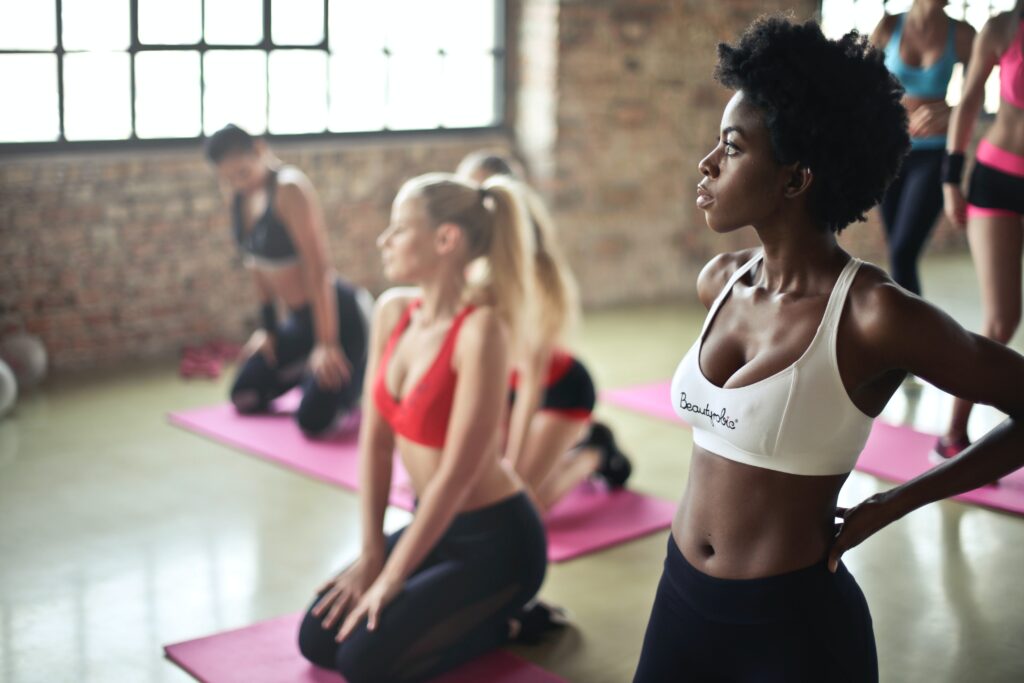
So, now you’re probably wondering what all of this means and how it relates to helping you train more efficiently.
The type of training you’ll want to complete should be directly connected to your end goal.
Your end goal could be anything from running a marathon, lifting a certain amount of weight, or improving your sports performance.
Understanding which of the energy pathways your body will need to rely on will help you create a training plan.
You will want to tap into that same pathway during your training.
For example, if your goal is to run a marathon, you would want to choose aerobic training tasks that will help get your anaerobic pathway ready.
You wouldn’t want to do anaerobic training tasks, since they wouldn’t do much to prepare you to run a long distance.
It is all about working smarter, not harder, to get the results you’re looking for.
RELATED: 9 Ways to Lose Weight
What to Eat to Optimize Your Training

Eating right and making sure you are properly nourishing your body is always important.
This is especially true when you are exercising or training for sport or fitness!
However, the fuel you should be putting into your body will vary depending on the exercises you are doing and your specific goals.
If you don’t consume the right mix of foods and beverages before, during, and after you exercise, not only will your workout not be as effective as you want it to be, but you are also risking injuring your body.
A few basic sports nutrition guidelines will help to properly fuel your body and maximize each workout session.
Understanding Macros

Our bodies need macronutrients to do everything we need to do to get through the day.
So, it’s even more essential to consume the right mix of macronutrients, or macros, when training or working out.
Carbohydrates, proteins, and fats are the three different types of macros our bodies need.
Each macro serves a different purpose.
Protein
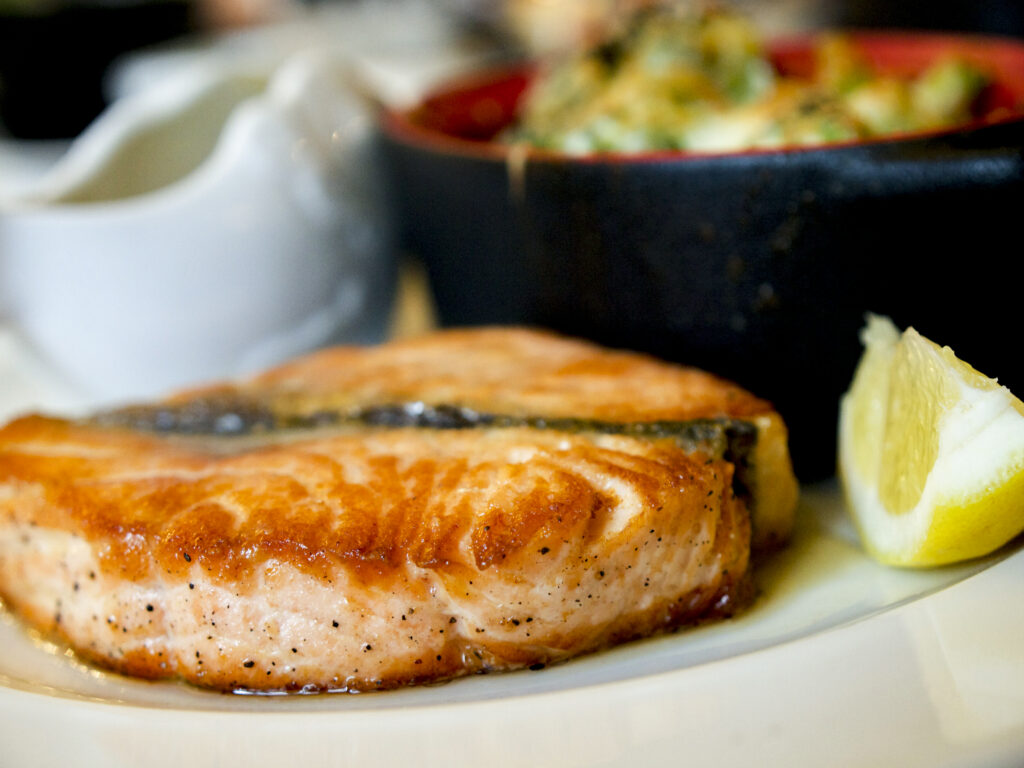
Including enough protein in your diet is also essential for training.
Our bodies rely on protein to help our organs function, allow enzyme reactions to occur, and help form and strengthen tissues, such as our muscles.
Proteins are made of different combinations of amino acids.
Nine of these amino acids are essential for our bodies.
We receive what we need through eating animal products or different plant-based protein options.
Carbohydrates

Our bodies rely heavily on carbohydrates to provide us with the energy we need.
Generally, you should be aiming to get between 45 and 65% of the energy you need from carbs.
But, this will vary depending on your unique activities and goals.
We convert the glucose from carbs into adenosine triphosphate, or ATP.
It is important to note that not all carbohydrates are the same. Carbs can be simple or complex.
Simple carbs have a shorter molecule and are easier for your body to break down than complex carbs.
Complex carbs take longer to digest and will provide your body with energy for a more extended time.
So make careful selections, depending on your specific training needs, when planning your meals.
Fat

It can be tempting to reduce the amount of fat you eat, especially when you are concerned with weight management. But, our bodies need healthy fats. So, removing all fat from your diet is never a good idea!
We need fat to provide insulation for nerves, help our hormones function properly, and provide an energy reserve.
When planning your meals, try to incorporate healthy fats such as extra-virgin olive oil or unrefined coconut oil, into your diet.
Creating Your Meal Plan

Since every person is different and everyone has unique fitness goals, the specific macronutrients you’ll want to consume will likely be different from your workout buddies.
Some factors that will impact the ratios you’ll need of each macro include:
Your Daily caloric Intake
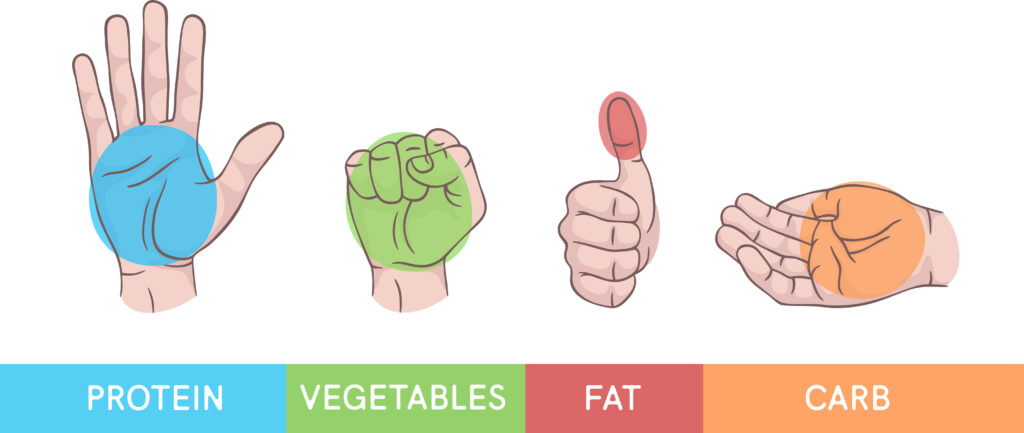
This can vary based on your specific goals.
For example, if you are trying to lose weight, your caloric intake will likely be lower than otherwise.
In general, you will want 45% to 65% of your calories to come from carbs, 10% to 35% from protein, and 20% to 35% from fats.
I like to use hand size portions because it makes it easy:
- Protein size is equal to your palm.
- Vegetable portions are equal to a closed fist.
- Carbs are equal to an open or lose fist.
- Healthy fats are equal to your thumb.
Your Goals
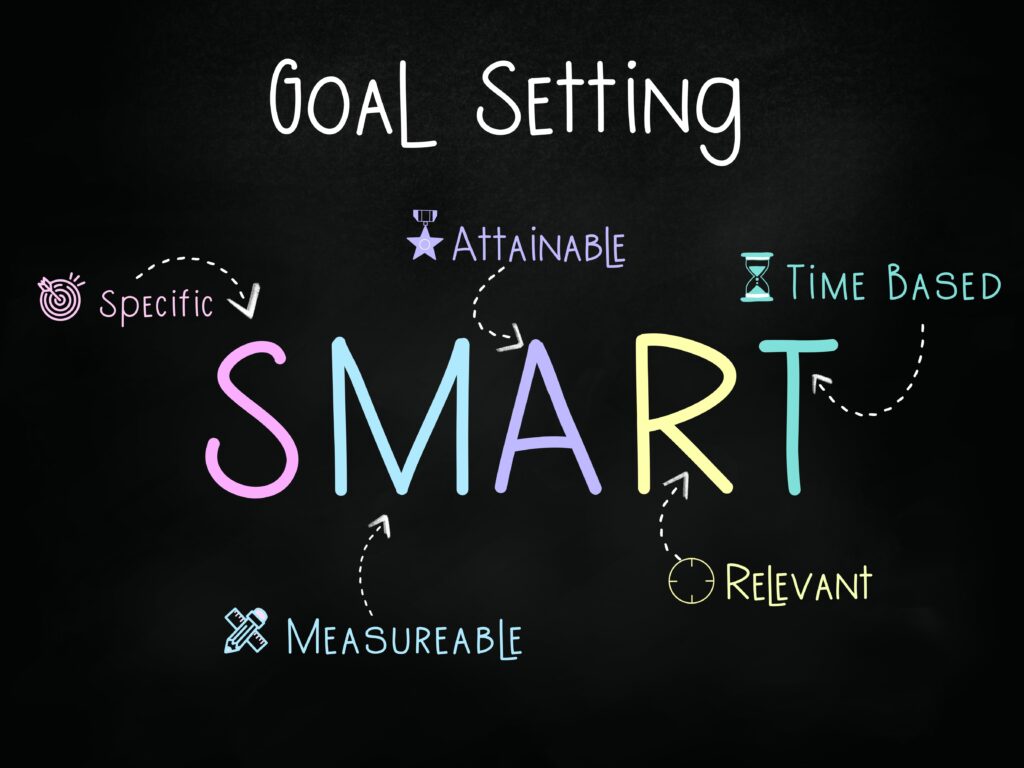
Your specific workout goals will also impact the macros you should consume.
For example, when you are strength training, adding some extra protein to your diet will be more critical than it would be if you are endurance training.
This is because protein will support protein synthesis and help you build more muscle.
For endurance training, you’ll want to choose easily digestible carbohydrates, since they won’t bother your gastrointestinal system, like protein could, during an endurance workout.
What Foods are Best to Eat Before a Workout?
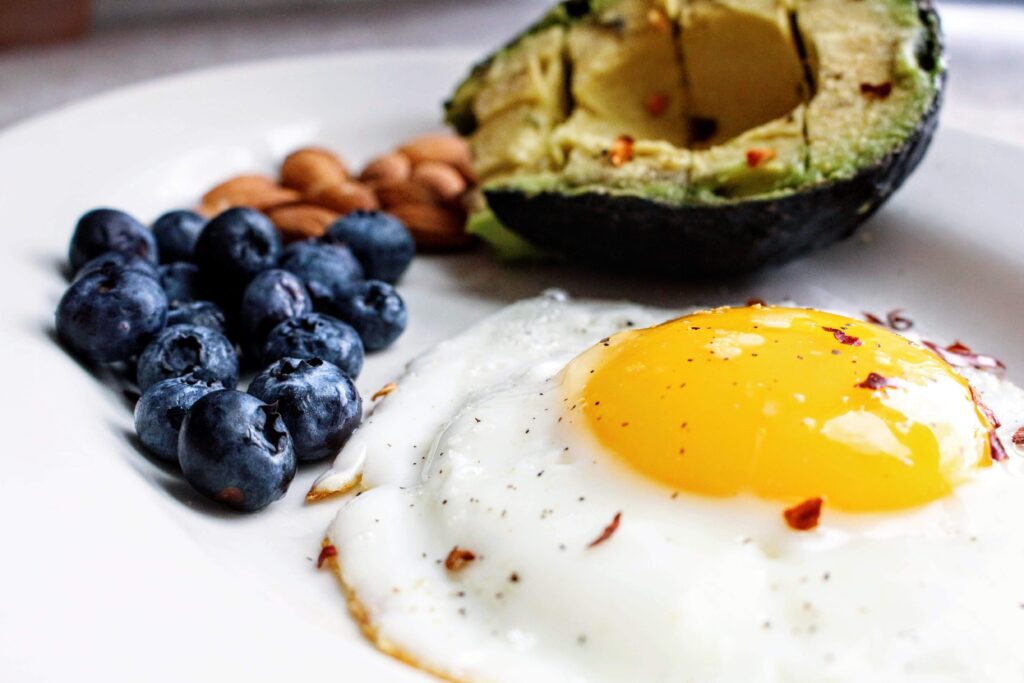
Before working out, you want to ensure your body has enough carbohydrates that it can turn into the energy you’ll need to push through your workout.
But, suppose you don’t eat enough carbohydrates, and your body depletes its stores of glycogen.
In that case, it will turn to using amino acids to produce glucose and give it the energy it needs.
Amino acids are found in muscle protein.
You don’t want your body to break down to make energy, so be sure to eat enough carbohydrates before and after a workout.
Ideally, you will want to eat the right mix of carbohydrates, protein, and fat before beginning your workout.
Below are a few ideas to get you started:
- Egg omelet with whole-grain toast and fruit
- Protein smoothie
- Whole grain bread with almond butter and fruit preserves
- Greek yogurt with fresh fruit
- Oatmeal with raspberries
Creating Your Training Plan

Now that you’ve gained an understanding of the 3 energy pathways, it is time to start forming your training plan.
Keep your end goal in mind as you plan out the different exercises you will complete.
Consider which energy pathway your body will be relying on most for your end goal and plan exercises that will also activate this pathway.
Also, plan your meals with the right mix of macros so that your body is fueled correctly.

